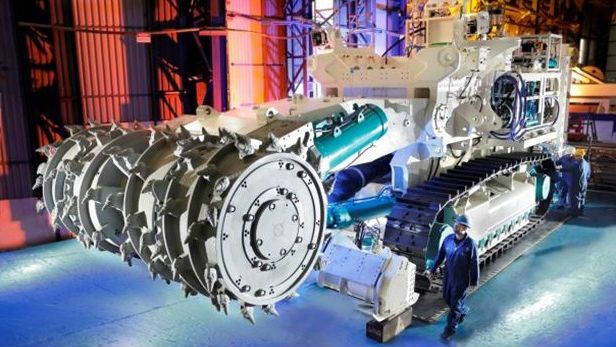Scientists Fear Deepsea Mining
Published on by Water Network Research, Official research team of The Water Network in Academic
Scientists fear that even before the ocean deep has been properly studied it will already have been exploited and damaged by commercial deepsea mining, looking for rare metal and minerals on the ocean floor.

Deep sea mining machine
Currently less than 0.05 percent of the ocean floor has been mapped at a level of detail where objects a few meters in size can be discerned. Marine biologists estimate that there are around 750,000 marine species yet to be identified, many of them likely to be found in the deep sea.
The mining industry has been developing technologies to extract metals and minerals at depths of over 500 meters, and it’s expected that commercial mining will start for the first time in 2018 off Papua New Guinea with the Solwara 1 project.
One mining method is to use a conveyor belt system of buckets to bring soil containing metal and mineral deposits from sites on the sea floor up to a mining ship for processing. A second method is to use pipes to hydraulically suck up soil from sites on the sea floor, also to a mining ship for processing.
But before that happens the MIDAS project, which is made up of scientists, industry figures, NGOs and legal experts from 32 organizations across Europe, gathered data to gain a good picture of what damage might be done by mining and so inform regulators of what needs to be put in place to protect the deep sea environment.
MIDAS scientists have released a summary of findings late last year and plan to release more technical papers in 2017. They found that new environmental issues need to be considered, such as the large surface areas affected by nodule mining, the potential risk of submarine landslides through sediment destabilization in gas hydrate extraction or the release of toxic elements through oxidation of minerals during mining.
There is a risk that the mining process will release metal ions into the water column, either in the benthic plume created by mining vehicles or, following dewatering on the surface vessel, in a mid-water plume. Such plumes can potentially travel hundreds of kilometers, carrying potential toxicants with them. Mid-water plumes may impact photosynthetic microalgae or animals within the water column.
Despite considerable sampling and study of the deep sea over the past century, knowledge of species distribution across most spatial and temporal scales is still very poor, say the scientists. Hence, current levels of biogeographic knowledge are not sufficient to make accurate predictions of the consequences of mining.
Read and download full MIDAS research here
Read more on: The Maritime Executive
Media
Taxonomy
- Technology
- Marine
- Hydrogeology
- Oceanographic Survey
- Impact
- Environmental Impact
- Pollution
- Environmental
- Marine Technologies